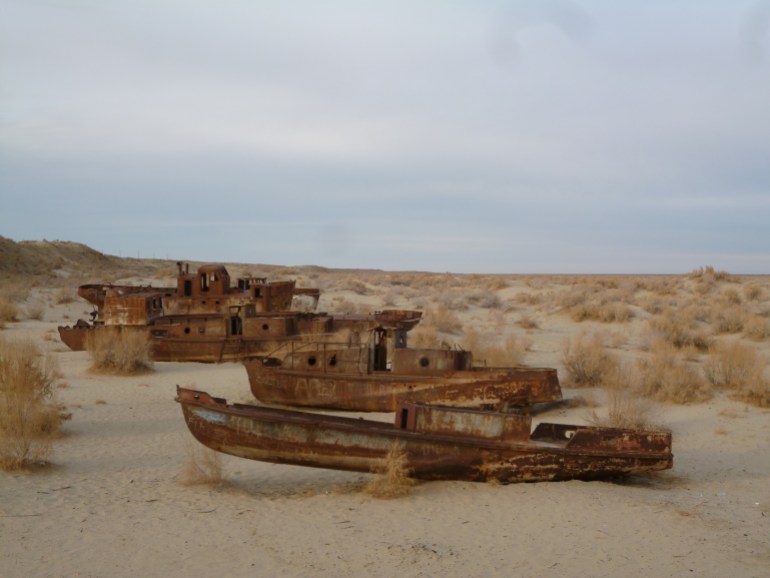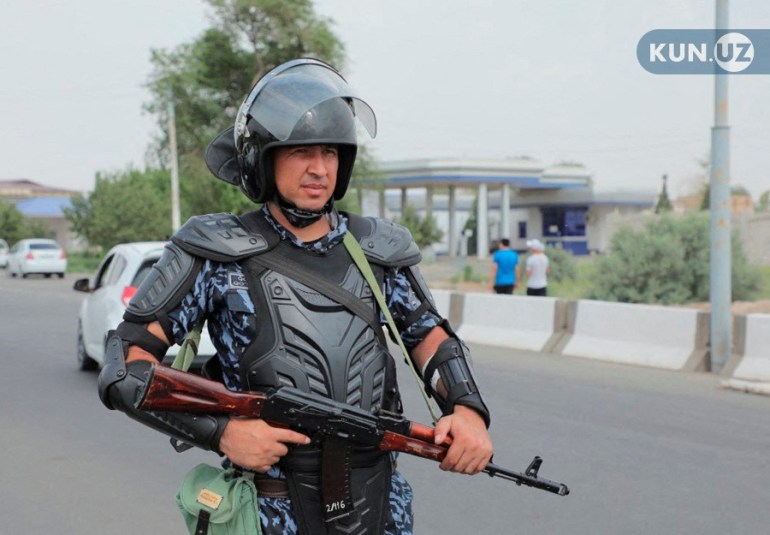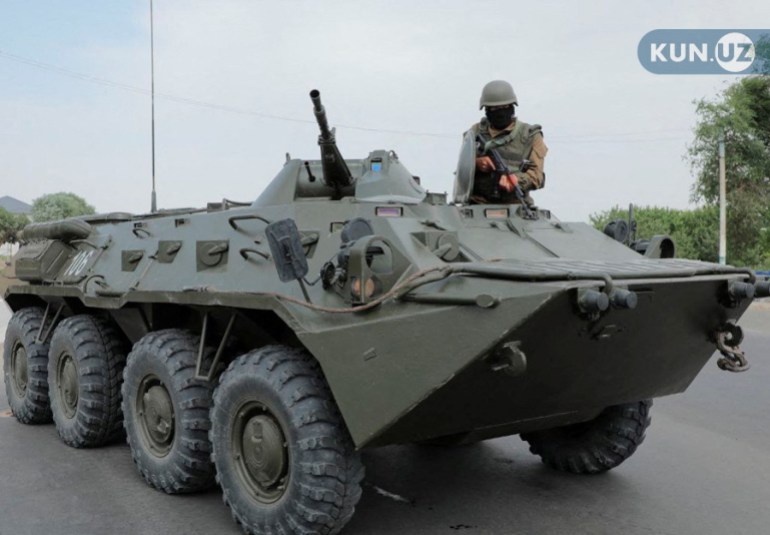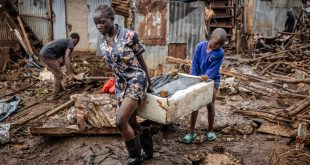The dark side of the moon. This is the feeling I often had when reporting from Uzbekistan’s largest and most environmentally troubled region with a barely pronounceable name – Karakalpakstan.
Because the world knows more about the moon’s least-known parts than about Karakalpakstan which occupies two-fifths of the ex-Soviet Central Asian country.
Karakalpakstan means “land of the black cloaks” after a medieval Turkic tribe that was part of nomadic coalitions roaming the Eurasian steppes from the Black Sea to northern China.
Karakalpaks settled down south of the Aral Sea, an inland body of water the size of Ireland fed by two rivers whose discharge equalled that of the Nile.
They switched to fishing and farming in the delta of the Amu Darya, an immensely fertile oasis with high groundwater levels that are ideal for rice paddies.
Uzbekistan is Central Asia’s most populous nation with 34 million inhabitants, but Karakalpakstan’s population is barely above two million because parts of it feel as suitable for human life as the dark side of the moon.
Manmade apocalypse
In 2016, I found myself in one of the most surreal and improbable places on earth – the Aral Sea‘s former bottom.
From horizon to horizon, it was filled with nothing but white, cigarette ash-like “salt dust” – an official scientific term for a toxic cocktail of salt, pesticides and chemical fertiliser.
The slightest gust of wind raised the salt dust that accumulated in the Aral Sea after decades of Soviet policies of boosting cotton production in Central Asia.
The policies led to the sea’s desiccation – and the largest manmade environmental disaster in history, according to the United Nations.
Karakalpakstan has for decades been its epicentre – and will remain such for the foreseeable future.

The windblown salt dust and the environmental degradation made the incidence of tuberculosis the highest in the former Communist bloc.
It made almost every Karakalpak woman and child anaemic and led to countless kinds of cancer and oesophageal diseases.
I learned all of that in the late 1990s when I worked for Doctors Without Borders, a medical relief organisation that started a tuberculosis treatment programme that helped tens of thousands of Karakalpaks.
I still remember the tears of a doctor at a tuberculosis hospital who realised that a bunch of foreigners in front of him were actually going to help with medicine, equipment and training. And they did.
But they and dozens of international humanitarian projects could not help revive the sea because all of Central Asia and northern Afghanistan still need the water that once flowed into it.
And the muddy spring water that does reach Karakalpakstan is still accumulated in its north for rice farming – and reaches places like the former seaport of Muynak only by mid-summer.

Karakalpaks became the collective victims of the region’s development. Their frustration was exacerbated by the negligence of the government of President Islam Karimov who ruled Uzbekistan with an iron fist between 1991 and 2016.
Drinking water was barely treated. Hospitals looked like they had just been bombed.
In some parts of Karakalpakstan, the soil was so contaminated that nothing grew on it except for desert shrubs that made cow milk as bitter as the lives of their masters.
Most of the food was therefore imported and expensive, and rural Karakalpaks were so poor that shops simply did not offer red meat or poultry.
Their only source of protein was fish from countless canals and little lakes that still dot Karakalpakstan, but even fishing was complicated by shortsighted government regulations and corruption.
That is the economic part of what triggered a recent revolt in Karakalpakstan.
Autonomy accepted
The political part was more nuanced and complicated.
Karakalpakstan is nominally an “autonomous republic” within Uzbekistan with a bit of self-governance such as a local parliament.
Uzbekistan’s post-Soviet constitution even stipulates that Karakalpaks have a right to secede.
A handful of activists cherished the idea, but the majority of the population was more preoccupied with physical survival. Many became migrants who went to work in neighbouring oil-rich Kazakhstan and some went to Russia.
They also knew how the former longtime ruler of Uzbekistan, Islam Karimov, handled a popular revolt on the other side of Uzbekistan, in the eastern city of Andijan, where government troops killed hundreds of protesters in 2005.
After Karimov’s death in 2016, his successor Shavkat Mirziyoyev started cautious economic reforms and eased some of the harshest restrictions that made Uzbekistan look like North Korea.
Meanwhile, several energy companies started drilling natural gas in the former seabed and Karakalpakstan started getting more government funds.
But several weeks ago, Mirziyoyev’s government announced a constitutional reform.
Dozens of amendments were proposed, including an extension of presidential terms, and the move was widely seen as a replay of what Russian President Vladimir Putin did in 2020 to “nullify” his previous terms.
But some of the amendments included the abolition of even the vestiges of Karakalpakstan’s self-governance.
Karakalpaks protest
In late June, thousands of Karakalpaks began protesting in the regional capital, Nukus, and in smaller towns.
Tasked with quelling the rallies, Karakalpak law enforcement officers sided with the protesters, a Karakalpak man told me on condition of anonymity.
Then, Tashkent sent planeloads of riot police who clashed with their Karakalpak colleagues and the protesters on July 1.
“They were incited by Americans,” a security officer in Tashkent told me.
A handful of mobile phone videos posted by a handful of independent media outlets and Telegram channels showed police throwing stun and smoke grenades at the protesters and beating them with clubs.
Other videos and photos showed the blood on the streets of Nukus and the bodies of young men with gaping gunshot wounds.

Uzbek authorities said 18 were killed and 243 were injured, including 18 law enforcement officers.
More than 500 were detained, they said but offered no further information.
The government also shut down web access and limited entry to Karakalpakstan.
Some locals describe the violence as a result of further negligence on the part of Tashkent.
Karakalpaks “didn’t really like Uzbeks, but things very really far from real resistance. Moreover, Tashkent started paying more attention to the region, channelling money,” a Karakalpak friend told me.
It was the authorities who pushed the situation to the extreme, he said.
“First, when they introduced the amendments, and then nobody at all in the halls of power responded to the discontent,” he said.
President Mirziyoyev flew to Nukus on July 2 and pledged to scrap the amendments related to Karakalpakstan’s autonomy.
A day later, he warned about the dangers of inciting separatism.
“Calls for separatism and mass riots will be firmly crushed according to the current legislation. Those responsible for this will suffer inevitable punishment,” he said.

 Top Naija News: Nigerian News, Breaking News Nigeria and World News Top Naija News is a daily news publication in Nigeria, delivering the latest breaking news in Nigeria and around the world.
Top Naija News: Nigerian News, Breaking News Nigeria and World News Top Naija News is a daily news publication in Nigeria, delivering the latest breaking news in Nigeria and around the world.


